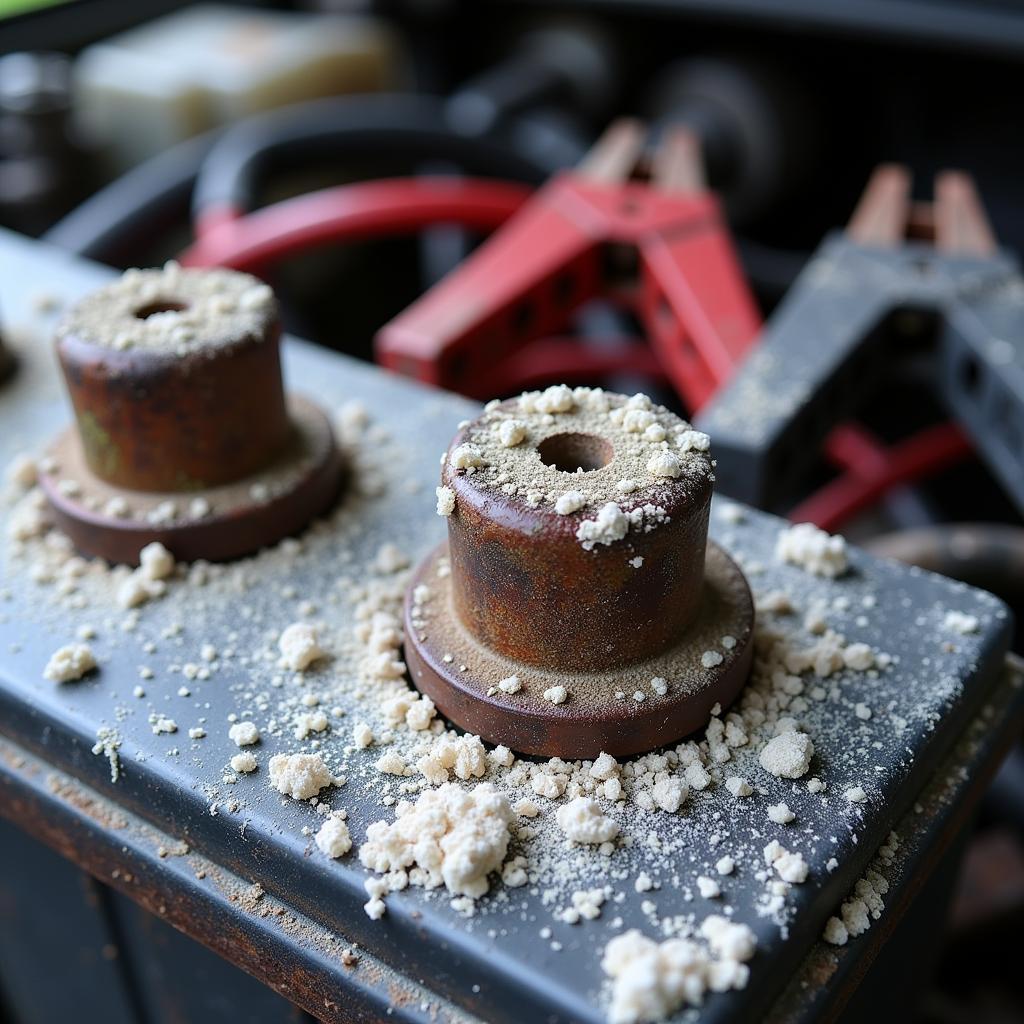Experiencing the frustration of a car that won’t start, especially after using jumper cables, is all too common. This article will dive into the reasons why using jumper cables might not be reviving your dead battery and offer a comprehensive guide to troubleshooting and fixing the issue. We’ll cover everything from proper jumper cable techniques to identifying underlying problems beyond a simple dead battery. battery dead car wont start
Why Using Jumper Cables Car Won’t Start Your Car
Sometimes, even with a seemingly correct jump start procedure, your car remains stubbornly lifeless. This can be due to a variety of reasons, from corroded battery terminals to a faulty alternator or even a more serious electrical problem. Let’s explore some of the most common culprits.
Corroded Battery Terminals: A Common Culprit
Corrosion on your battery terminals can prevent a good connection, hindering the flow of power even with jumper cables. This build-up often looks like a white, powdery substance.
 Corroded Car Battery Terminals Preventing Jump Start
Corroded Car Battery Terminals Preventing Jump Start
Faulty Alternator: More Than Just a Dead Battery
If your car starts with jumper cables but dies shortly after, a faulty alternator is a likely suspect. The alternator recharges the battery while the engine runs. If it’s malfunctioning, your battery won’t receive the necessary charge.
Bad Starter: The Engine’s Unsung Hero
A bad starter motor can mimic a dead battery. When you turn the key, you might hear a clicking sound, but the engine won’t crank. Jumper cables won’t help in this case, as the issue lies with the starter, not the battery.
Electrical Problems: Beyond the Basics
More complex electrical issues, like a blown fuse or a wiring problem, can also prevent your car from starting, even with jumper cables. These issues require more in-depth diagnostics.
“A surprising number of people overlook the simple things like checking for corrosion,” says Alex Morgan, Senior Automotive Electrical Diagnostic Technician. “A quick clean with a wire brush can often save you a lot of headache.”
A Step-by-Step Guide to Using Jumper Cables Correctly
Even if the problem isn’t simply a dead battery, knowing how to use jumper cables correctly is crucial. Here’s a breakdown of the proper procedure:
- Safety First: Park both vehicles close enough for the cables to reach but ensure they aren’t touching. Turn off both ignitions and engage the parking brakes.
- Identify the Terminals: Locate the positive (+) and negative (-) terminals on both batteries.
- Connect the Positive Cables: Attach one red clamp to the positive (+) terminal of the dead battery. Then, connect the other red clamp to the positive (+) terminal of the good battery.
- Connect the Negative Cables: Connect one black clamp to the negative (-) terminal of the good battery. Attach the other black clamp to a clean, unpainted metal surface on the car with the dead battery, away from the battery itself.
- Start the Good Car: Let the good car run for a few minutes to charge the dead battery.
- Start the Dead Car: Attempt to start the car with the dead battery.
- Disconnect the Cables: Once the dead car starts, disconnect the cables in the reverse order of connection.
What to Do When Using Jumper Cables Car Won’t Start
If your car still won’t start after attempting a jump, don’t panic. Here are some steps to take:
- Check the Connections: Ensure the jumper cables are securely attached to the terminals and the grounding point.
- Clean the Terminals: If you see corrosion, clean the battery terminals with a wire brush and baking soda solution. things that drain car battery, car battery not starting
- Try Another Jump: Attempt the jump start procedure again after cleaning the terminals.
- Inspect the Alternator: If the car starts but dies quickly, have the alternator tested. automatic wont start
- Consider the Starter: If you hear a clicking sound, the starter might be the issue. key car battery low
- Seek Professional Help: If none of these steps work, it’s best to consult a qualified mechanic.
“A multimeter can be a valuable tool for diagnosing electrical issues,” adds Maria Rodriguez, Automotive Electrical Engineer. “You can use it to check the battery voltage and the alternator output.”
Conclusion
Using jumper cables can be a lifesaver, but it’s important to understand the proper procedure and potential underlying problems. By following the steps outlined in this article, you can effectively troubleshoot and resolve the issue of your car not starting even after using jumper cables. Remember, safety and accurate diagnosis are key to getting back on the road quickly and safely.

